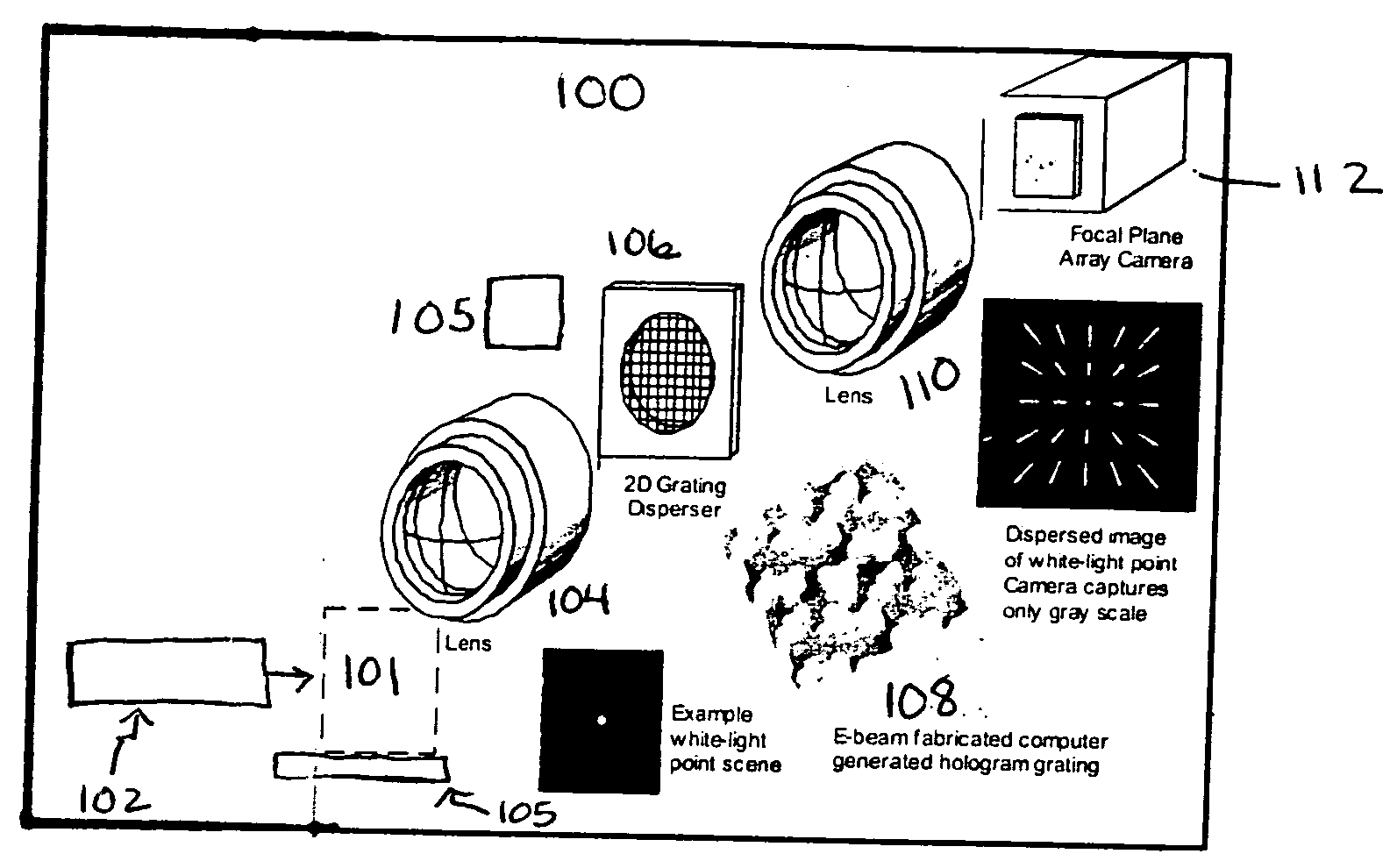Method for Raman computer tomography imaging spectroscopy
a computer tomography and raman light technology, applied in the field of computed tomography imaging raman light detection, can solve the problems of limited time elapsed, inability to detect raman light, and inability to use chemical imaging to monitor dynamic changes in samples,
- Summary
- Abstract
- Description
- Claims
- Application Information
AI Technical Summary
Benefits of technology
Problems solved by technology
Method used
Image
Examples
Embodiment Construction
[0016] Reference will now be made in detail to the preferred embodiments of the present invention, examples of which are illustrated in the accompanying drawings. Wherever possible, the same reference numbers will be used throughout the drawings to refer to the same or like parts.
[0017]FIG. 1 illustrates system 100 that may be used to carry out the method of the present invention. Sample 101 is positioned on substrate 105. Substrate 105 can be any conventional microscopic slide or other means for receiving and optionally securing sample 100. Light source 102 is positioned to provide incident light to sample 100. Light source 102 provides substantially monochromatic light. The source 102 of substantially monochromatic light is preferably a laser source, such as a diode pumped solid state laser (e.g., a Nd:YAG or Nd:YVO4 laser) or Ar ion laser capable of delivering monochromatic light at a wavelength of 532 nanometers. In another embodiment, the substantially monochromatic light sour...
PUM
| Property | Measurement | Unit |
|---|---|---|
| Raman Shift | aaaaa | aaaaa |
| Raman Shift | aaaaa | aaaaa |
| wavelength | aaaaa | aaaaa |
Abstract
Description
Claims
Application Information
 Login to View More
Login to View More - R&D
- Intellectual Property
- Life Sciences
- Materials
- Tech Scout
- Unparalleled Data Quality
- Higher Quality Content
- 60% Fewer Hallucinations
Browse by: Latest US Patents, China's latest patents, Technical Efficacy Thesaurus, Application Domain, Technology Topic, Popular Technical Reports.
© 2025 PatSnap. All rights reserved.Legal|Privacy policy|Modern Slavery Act Transparency Statement|Sitemap|About US| Contact US: help@patsnap.com



